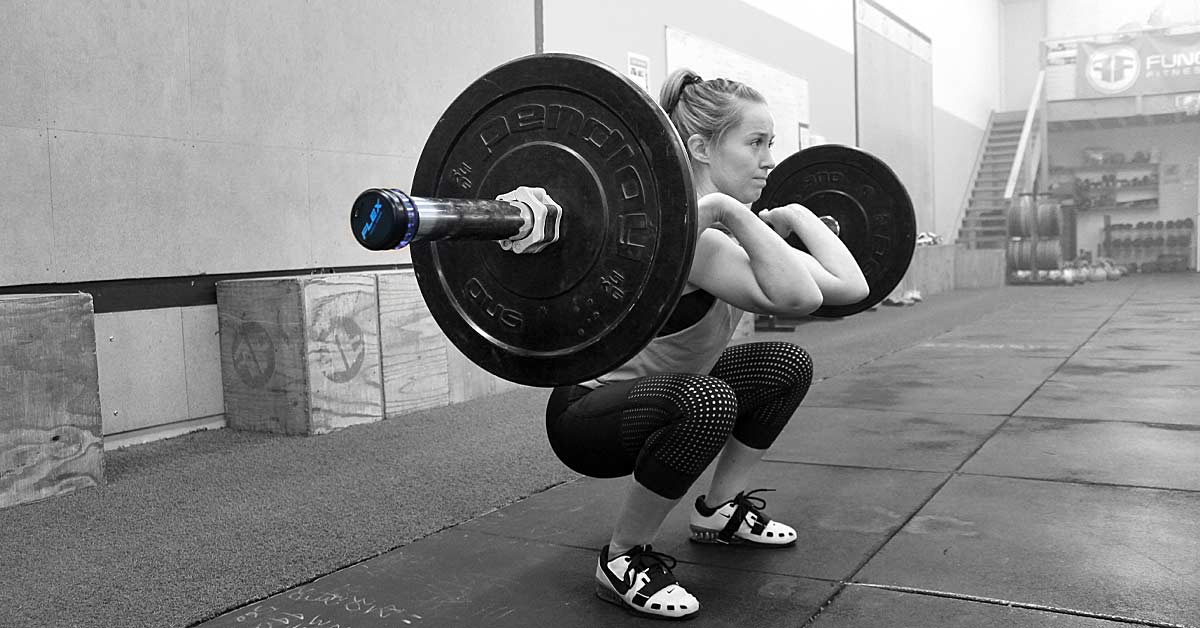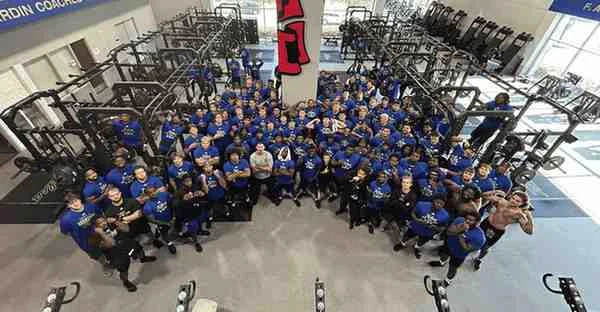In my own personal training over the last five years, the term “velocity-based training” usually referred to a sprint between Freelap timing gates. However, an easily portable bar speed monitoring unit, the “FLEX,” has changed that paradigm in recent months.
An easily portable bar speed monitoring unit, the FLEX, has changed the paradigm of velocity-based training in recent months, says @JustFlySports. Share on XIn the weight room, I’ve always enjoyed the use of bar speed monitoring in group training. Measuring barbell velocity across my athlete groups has always been for the following purposes:
-
- Motivation.
-
- More athletic execution of lifts.
-
- A new stimulus to be phased in and out of a program.
Motivation: Having an outcome goal is clearly more inherently motivating to an athlete and will yield higher outputs. Jumps are several centimeters higher when you have an object to touch. Maximal isometric outputs on a force plate are 10% higher when the athlete gets feedback on their output. Don’t downplay the role of feedback from the environment in the total development of the athlete.
Don’t downplay the role of feedback from the environment in the total development of the athlete, says @JustFlySports. Share on XAthletic lift execution: Whether lifts are heavy or light, speed of execution is an important factor in what type of athlete the individual is becoming. In the Olympic lifts, in particular, when velocity falls below a certain threshold, the movements just start to look “un-athletic.” Just ask any experienced coach. We also know that doing lifts that are supposed to be athletic (Olympic lifts) with low bar speeds will not yield improvements in things like vertical jump. Bar speed monitoring keeps power work just that—power work.
Novelty: Bar speed monitoring is a great tool to drive selective novelty into the training program as well. This novelty can be served well by the selective introduction and reintroduction of work into a training program. I’ve historically used bar speed monitors in an “every other week” format, but this scheme could be very adjustable depending on how much neural energy you want your lifting sessions to consume. I have always enjoyed using bar velocity on a biweekly basis, since I felt it gave athletes something to look forward to and also took a bit of pressure off in the weeks that we didn’t use it to set a “bar speed PR” with a particular weight. In this manner, we could flow biweekly between a “strength version” of a lift, and a “power version.”
All this being said, I’ve found the bar speed measuring units that I’ve liked the most have this in common:
-
- They are very simple to set up and use.
-
- They give meaningful outputs.
-
- They give consistent outputs and are reliable.
The FLEX unit is a piece of bar-speed monitoring technology that meets these three criteria extremely well, whether you are working with a team or training by yourself. The device is lightweight, easy to set up, accurate, and futuristic-looking. It comes with the unit, as well as a long rectangle of reflective material that gets set up under the bar.
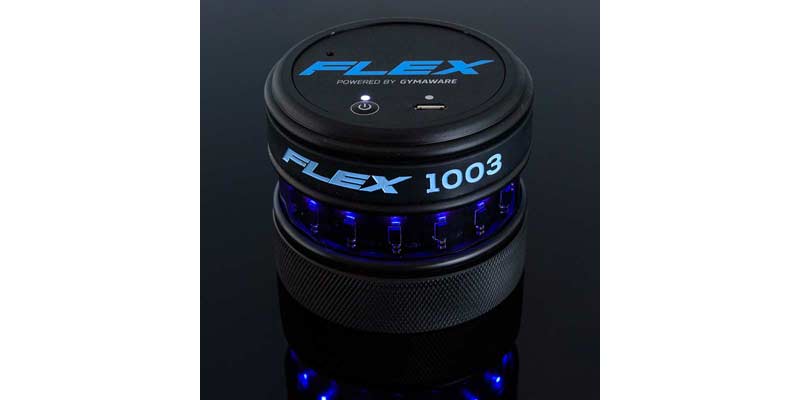
Pros of the FLEX Unit
In my experience, the FLEX unit has the following “pros” for its structure and function:
-
- Streamlined interface.
-
- Easy to set up.
-
- Lots of interesting metrics.
-
- Easy management of history.
-
- Great insights as to the makeup of your workout.
-
- Just looks cool and sleek.
The unit and its interface are super slick. It’s extremely easy to turn on and connect to a smartphone or tablet, with minimal hoops to jump through to get up and running with the performance of a set.
The metrics the FLEX unit offers are:
-
- Velocity (peak, average, and set average).
-
- Power (peak, average, and set average).
-
- Rep distance.
-
- Power, strength, and speed ratio breakdown for entire workout.
-
- Bar path.
Below are two common metrics for the FLEX—velocity and power.
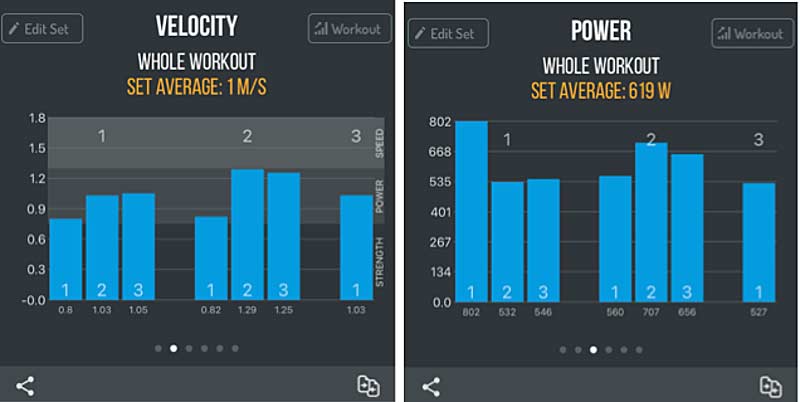
Here are some “less common” metrics that I find interesting. The bar path and distance give some insights into the inherent variability that occurs from rep to rep in each training set.
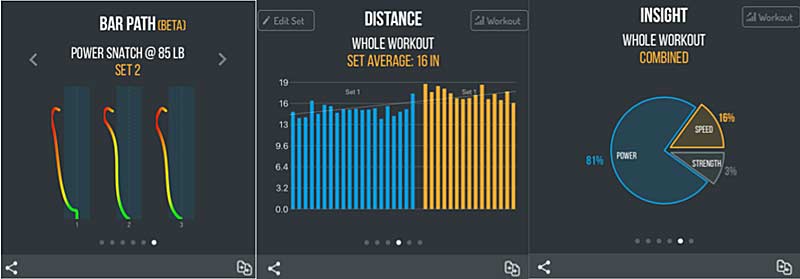
The rep distance is one metric I hadn’t seen before, and I was particularly interested to see the variation that happened from repetition to repetition in each exercise I performed, not just in terms of velocity, but set distance as well (albeit subtle). This idea really brings out the notion of “repetition without repetition” that is present in all human movement, as well as barbell training.
The rep distance metric really brings out the notion of “repetition without repetition” that is present in all human movement, as well as barbell training, says @JustFlySports. Share on XIn moving through the workouts day to day and week to week, you can easily manage your training history via a very simple and practical interface. The ratio breakdown of qualities, as I mentioned before, is a nice “at-a-glance” measure that helps you get a sense of what you were actually training that day!
Overall, I don’t like a bar speed unit for my personal training unless it makes the training more enjoyable by not having to click too many buttons. This device does just that, along with a variety of meaningful metrics and easy access to my own training history.
Cons of the FLEX Unit
I don’t really need to make a list for the cons, since there aren’t many. One aspect that isn’t a “hard” con is that there are no current eccentric bar speed metrics, or “shape of the lift” metrics, available in the app, so to speak. This data is definitely being “recorded,” but since this is a portable unit designed for an individual interested in improving resistance training maxes (and not likely the eccentric strength needed to rebound quickly into a jump), this data is currently not available in the app.
There is no way to avoid it with the unit, but there are also two pieces to set up for each lift. In an individual setting, this is no problem at all, but it may become an issue when there are more moving pieces in a room with more athletes, and as the coach-to-athlete ratio gets higher.
Recommended Especially for Individuals and Small Groups
The FLEX is a portable, lightweight bar speed monitoring device that looks futuristic and is simple to use. I would highly recommend it for anyone looking to take their personal barbell workouts to the next level, as well as those who are training others in 1-on-1 or small groups.
Overall, the FLEX nails what it is meant to do on every level, and I highly recommend it, says @JustFlySports. Share on XIn larger group settings, this unit can be very effective (especially at its reduced cost), and I have used it in these settings with the help of interns. As these groups do get larger, however, a traditional GymAware unit will likely offer a more streamlined barbell speed monitoring experience. Overall, the FLEX nails what it is meant to do on every level, and I highly recommend it.

